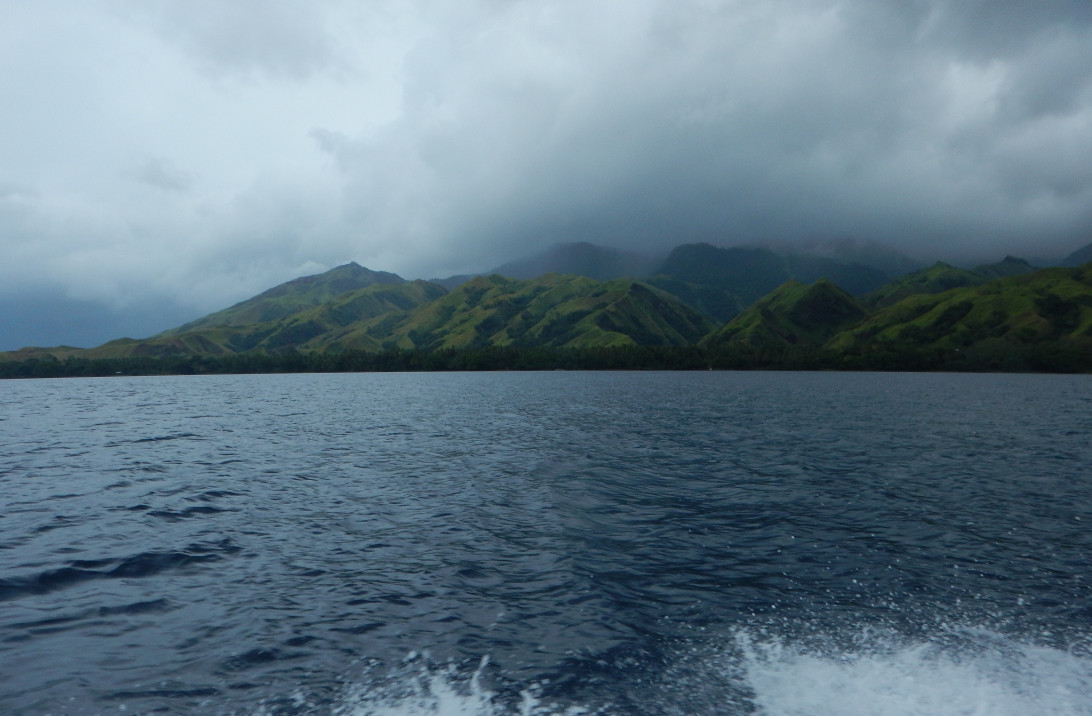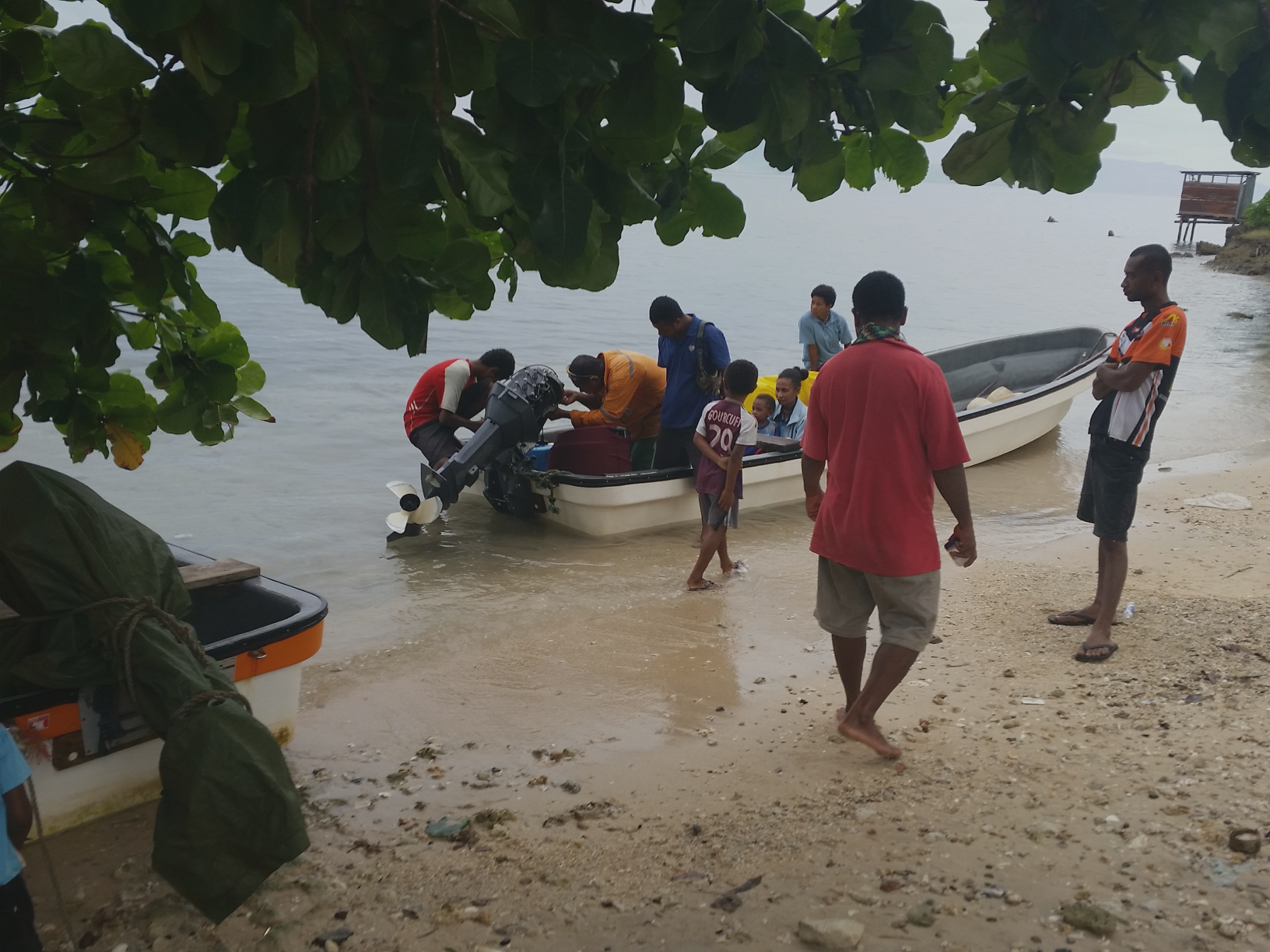Monday, 20th October.
In the morning we wait a bit for the wind to drop, and then depart. We stop a few hundred metres from the shore - I don't know why. When they restart the engine, the starter rope breaks. Since the engine was running, there was a discussion whether to attempt the crossing or to return to the mission for repairs. We chose to return.
The (first) departure. The weather is not great ...

Going back to the mission.

In the neighboring village there is a mechanic. We contact him by phone, because the phone works on Fergusson.
The repair takes place.


I take advantage of the wait to take this photo of a small observer.

We leave for the crossing that should last 2 hours.
As soon as we pass the cape it starts to rain. Visibility gets worse very quickly. The wind rises and the waves grow larger.
Two women, one with a baby, and an old man try to take shelter under a tarpaulin. Others get the spray in the face. I'm on the bench, in the middle of two other people. I have nothing to hang on to besides the bench itself. I keep my bilum between my legs. Soon everything is soaked with seawater. Both my cameras and my smartphones are waterproof. I chose them for that reason, sacrificing image quality for security. Just as well I did, because everything would have failed. The hard drive is also in a waterproof container.
After 3 hours of storm they started repeating "you should be able to see land" and "we should already have arrived".
After 4 hours the mechanic says we are going to run out of fuel. They asked to see the GPS on my smartphone. As the touch screen was full of salt water, it didn't work very well but just enough. We had time to see that we had covered two-thirds of the distance and we were going in the right direction - and then it stopped working.
The mechanic collected all the remnants from the bottom of the fuel cans in order to continue a little. From there we were able to get a phone signal. We called for help, saying we were lost, without petrol but we did not know our position. Others telephoned their families ... The woman with the baby cried constantly, saying we were going to die, and then she started to say her prayers. I was a little rude, but I told her to shut up!
As there was a phone signal we knew we were within 40 km of the coast. We waited to see whether the remaining fuel would get us to the coast.
After an interminable time we discerned a black mass. It was the mountains along the coast. The rain stopped when we got nearer and the outline of the mountains became visible. A passenger recognized the shape of the mountains and told us where we were. He guided us to a place where there were a few houses and a tiny shop.
We landed like zombies, shivering with cold, onto a black sand beach.
The pilot said he had always been confident, and sure that we would get there. So I reminded him that I had heard him say that we were lost and we did not have enough fuel ... He admitted that before seeing the GPS he thought we had passed East Cape and were lost somewhere in the Coral see between Papua and Australia.
We found 20 litres of petrol to buy and we set off again down the coast to the southeast. On the way, we got caught in the worst rain of the voyage. Finally we arrived in a village, Awayama which is the start of a track to Alotau through the mountain. The crossing had lasted nearly five hours, not the two hours expected.
We found a PMV and set off for Alotau.
I went to the bank, and back to the Transit Hotel. I put all my devices under running water to remove the salt water. People are a little surprised to see me washing cameras and a smartphone.
Extremely happy to be on dry land and still alive.
|